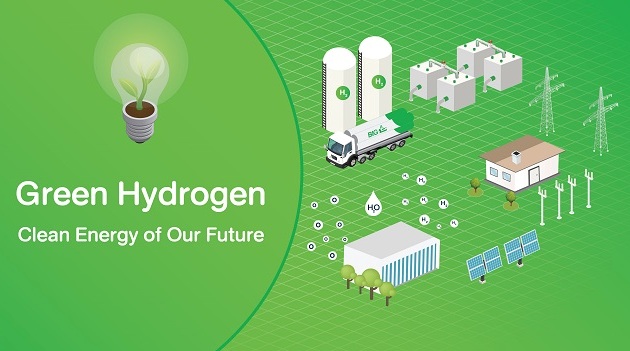Introduction
Renewable energy is revolutionizing the global energy landscape, offering sustainable and cost-effective alternatives to fossil fuels. As the demand for renewable energy surges, advancements in solar power, wind energy, and green hydrogen are shaping the future. This article explores the latest renewable energy trends, key innovations, and how they contribute to a greener planet.
The Rise of Renewable Energy

The transition to renewable energy is driven by environmental concerns, government policies, and technological advancements. With global efforts to reduce carbon emissions, investments in solar power, wind energy, and green hydrogen have accelerated, making renewable energy more accessible and affordable.
Solar Energy Innovations

1. Enhanced Photovoltaic (PV) Technology
Solar energy remains the most widely adopted renewable energy source. Innovations in photovoltaic (PV) technology are significantly improving efficiency and affordability. Key developments include:
- Perovskite Solar Cells: Offering higher efficiency and lower production costs than traditional silicon-based panels.
- Bifacial Solar Panels: Capturing sunlight from both sides to maximize solar energy generation.
- Floating Solar Farms: Utilizing water bodies to install solar power panels, reducing land use and increasing energy yield.
2. Solar Storage Solutions
One of the biggest challenges of solar energy has been energy storage. The latest trends in solar power battery storage include:
- Lithium-Ion Batteries: Improving capacity and lifespan for residential and commercial use.
- Solid-State Batteries: Offering higher efficiency, safety, and longevity.
- Grid-Scale Storage: Large-scale solutions to store excess solar power for consistent supply.
3. Solar Panel Recycling
With the rise in solar power adoption, recycling initiatives are crucial for sustainability. Advances in recycling technology ensure that old panels are repurposed, reducing environmental impact and material waste.
Wind Energy Innovations

1. Offshore Wind Farms
Wind energy is gaining momentum due to its ability to harness stronger and more consistent winds. The latest innovations include:
- Floating Wind Turbines: Allowing wind farms to be installed in deeper waters where wind speeds are higher.
- Larger Turbines: Increasing wind energy generation efficiency with taller structures and larger blades.
- Hybrid Wind-Solar Farms: Combining solar power panels and wind energy turbines in a single location for optimal energy output.
2. Smart Wind Turbines
Advanced technologies are enhancing the efficiency of wind energy turbines. Key innovations include:
- AI and IoT Integration: Smart sensors and artificial intelligence optimize wind energy performance and maintenance.
- Aerodynamic Blade Design: Enhancing efficiency and reducing noise pollution.
- Self-Healing Coatings: Increasing turbine lifespan by preventing wear and tear from harsh weather conditions.
3. Energy Storage and Grid Integration
To address wind energy intermittency, advanced storage solutions and grid integration technologies are being developed:
- Compressed Air Energy Storage (CAES): Storing excess wind energy in underground reservoirs for later use.
- Hydrogen Storage: Converting wind energy into green hydrogen for use in various applications.
- Smart Grids: Enhancing energy distribution efficiency by integrating renewable energy with other sources.
Green Hydrogen: The Future of Clean Energy

1. Electrolysis Advancements
Green hydrogen is produced by splitting water using renewable energy electricity. Recent advancements in electrolysis technology include:
- PEM Electrolyzers: Providing high efficiency and faster green hydrogen production.
- Alkaline Electrolyzers: Offering cost-effective large-scale green hydrogen generation.
- High-Temperature Electrolysis: Utilizing excess heat from industrial processes to enhance efficiency.
2. Hydrogen Fuel Cell Developments
Fuel cell technology is essential for the widespread adoption of green hydrogen. Key improvements include:
- Solid Oxide Fuel Cells (SOFCs): Increasing efficiency for power generation.
- Proton Exchange Membrane (PEM) Fuel Cells: Used in green hydrogen powered vehicles and industrial applications.
- Hydrogen-Powered Aviation: Developing aircraft that run on green hydrogen fuel cells to reduce carbon emissions.
3. Green Hydrogen Infrastructure
For green hydrogen to become mainstream, infrastructure development is crucial. Current trends include:
- Hydrogen Refueling Stations: Expanding networks for green hydrogen powered vehicles.
- Pipeline Infrastructure: Building dedicated pipelines to transport green hydrogen efficiently.
- Industrial Applications: Using green hydrogen in steel production, chemical manufacturing, and power plants to reduce emissions.
The Role of Government Policies and Investments
Governments worldwide are investing in renewable energy projects and offering incentives to accelerate adoption. Key policies include:
- Renewable Energy Subsidies: Financial incentives for solar power and wind energy installations.
- Carbon Pricing: Encouraging industries to shift to renewable energy sources.
- Net-Zero Targets: Setting long-term goals for reducing greenhouse gas emissions.
Challenges and Future Prospects
Despite the progress, challenges remain in the transition to renewable energy:
- Energy Storage Limitations: Improving battery technology to store excess renewable energy.
- Infrastructure Development: Expanding renewable energy grids and transmission networks.
- Cost Reduction: Making advanced technologies more affordable through research and development.
Conclusion
The future of renewable energy is promising, with continuous innovations in solar power, wind energy, and green hydrogen. As technology advances and investments increase, the world moves closer to a sustainable energy future. Embracing these trends will play a crucial role in reducing carbon emissions and combating climate change. Renewable energy is not just an alternative—it is the key to a cleaner and more resilient planet.



































